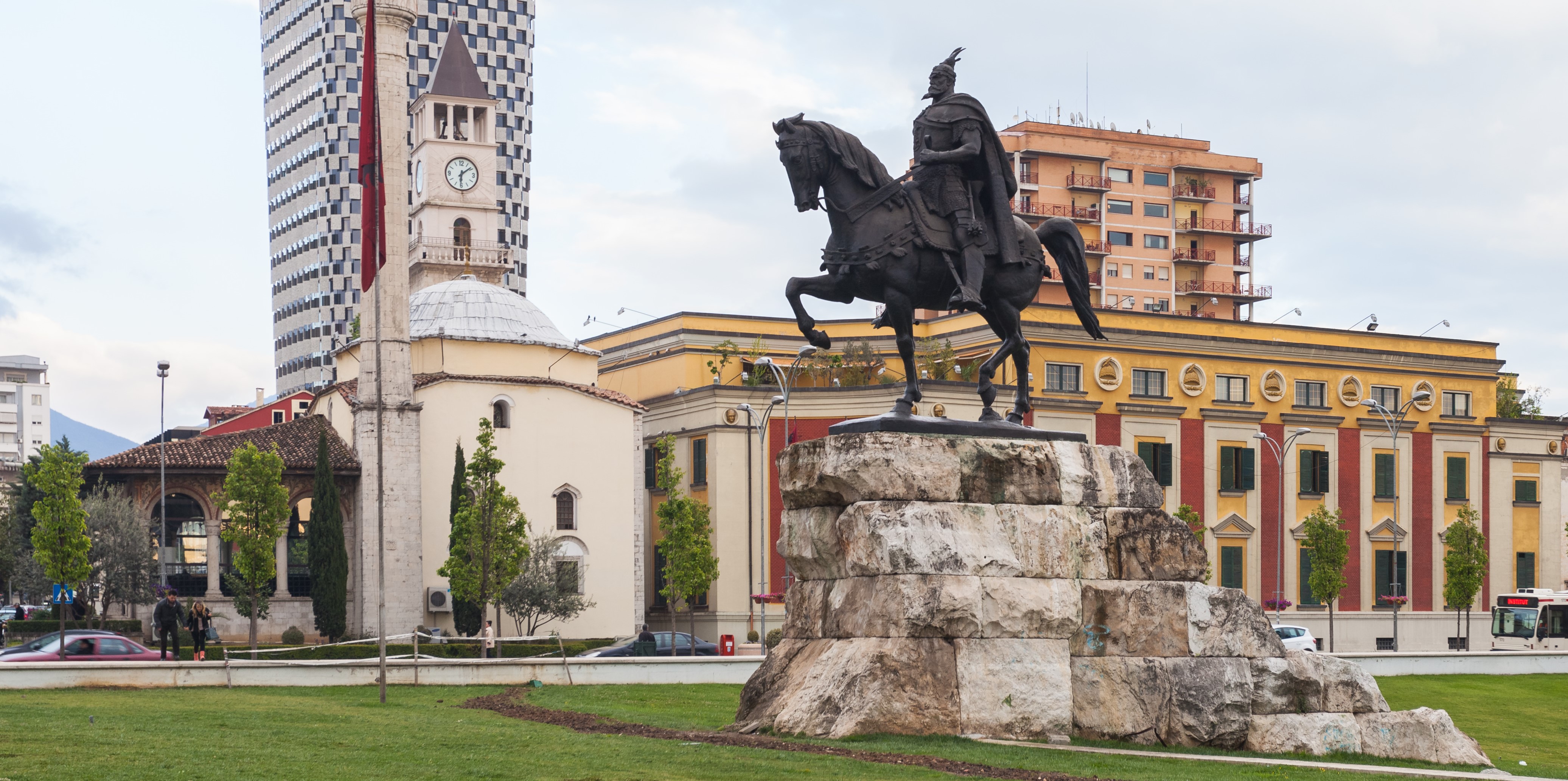Every Eid-Al-Fitr, the Albanian Muslim community organizes a collective prayer in Tirana’s public square, a crowded event filled with people adoring and worshipping their God, ideals and morals. While attending as a spectator, one can witness a scene colored with feelings of tranquility, peace and harmony.
Since the prayer is done in the direction of the Maqqah (the most important artifact of Islam), a statue of Albania’s national hero, Skanderbeg, is covered with a screen/platform, visually blocking the monument from the view of people praying. Such an act is done as to not give the impression that the prayer is done to the statue; worshipping entities other than God is strictly prohibited in Islam.
Such an atmosphere is completely opposite to the public debate national television hosts on Eid-Al-Fitr, at least in these last 5-6 years. “Skanderbeg is hidden, and that is an insult to our national identity,” some argue.
Article 14 of the Albanian Constitution recognizes Skanderbeg’s helmet as a constitutional symbol, while Article 10 states that there is no official religion in the Republic of Albania.
Bigger questions are oftentimes raised: Is Islam in Albania contrary to European integration? And how can the concealment of Skanderbeg’s statue be approached legally, since secularism is officially recognized?
While we have no precedent issued by Albania’s Constitutional Court, we can’t help but look into the European Court of Human Rights’ (ECHR) jurisprudence on this issue. In Lautsi vs Italy (no. 30814/06), crosses on school walls were considered by the court to be nothing but an expression of Italy’s rich history and tradition with Catholicism. Consequently, the symbol was a representation of history- not an imposition on it.
In Sahin vs Turkey (44774/98), the court ruled that a medical school’s ban on Muslim students wearing headscarves was unlawful. A major part of Turkey’s history is clearly Islamic, but nevertheless, the court didn’t hold the prohibition to be unlawful on this ground. Rather, it focused on the applicants’ freedom of religious expression.
Conclusively, the court’s view on identity remains a bit unclear. When should history be considered to be a factor in the contradiction between the freedom of religious expression and national symbols? One can almost believe that identity is left out of consideration in cases that take place in countries where religion is a measure of political control or even authoritarianism.
The discussion becomes rather complex when it comes to determining a fixed identity focused on history. Considering an almost five-century-long occupation by the Ottoman Empire, many would consider a conservative version of Islam to be an integral part of Albanian society. Some believe it’s different—even though the majority of Albanians are Muslim, that doesn’t contradict their “European character”—a very vague notion that relies on geographical, and sometimes even racial, considerations. Ismail Kadare’s “The European Identity of Albanians” is no different; according to, perhaps the most celebrated Albanian author and intellectual, Europe remains a continent of “unchangeable identities.”
We should not view Europe in such an unchangeable light: considering the emigratory movements coming mainly from Africa and the Middle East, the continent is now dynamic. The argument used in Lautsi isn’t functional anymore; the roles traditions and history play in identity have become much more insignificant. We may even talk about an omission of identity. In this light, European integration remains solely in the hands of political, economic and legal measures: reducing levels of corruption, implementing measures on inflation, and a general improvement in well-being.
Albanian politics doesn’t revolve around identity. Much more than that, it’s focused on temporary, short-term interests. While this has caused a general instability in society, any debate that would focus on “national identity” might unfortunately be viewed as a secondary, luxurious subject. Even in countries where policies are aimed at maintaining a Christian identity, like Hungary or Poland, such measures can be viewed in a populist light, mere political moves to ensure electoral stability.
Conclusively, the idea of Europe as a “Christian club” raises too many doubts for it to be used as a shadow to the Lautsi argument. Even if we accept a Christian-Albanian identity (brought forward primarily by intellectuals such as Kadare), that wouldn’t be relevant to today’s Europe.
Finally, national identity should be a matter of cultural discussion, not political or constitutional discourse. Even if religious practices may pose a certain objection to elements of a presumed national identity, such issues cannot interfere with Albania’s European integration.
In the age of liberalism and flexibility, such discussions come second to a country’s constitutional life. Lautsi’s argument just isn’t practical anymore: the Europe of “unchangeable identities” doesn’t exist. Even if it did, it’s now gone.


